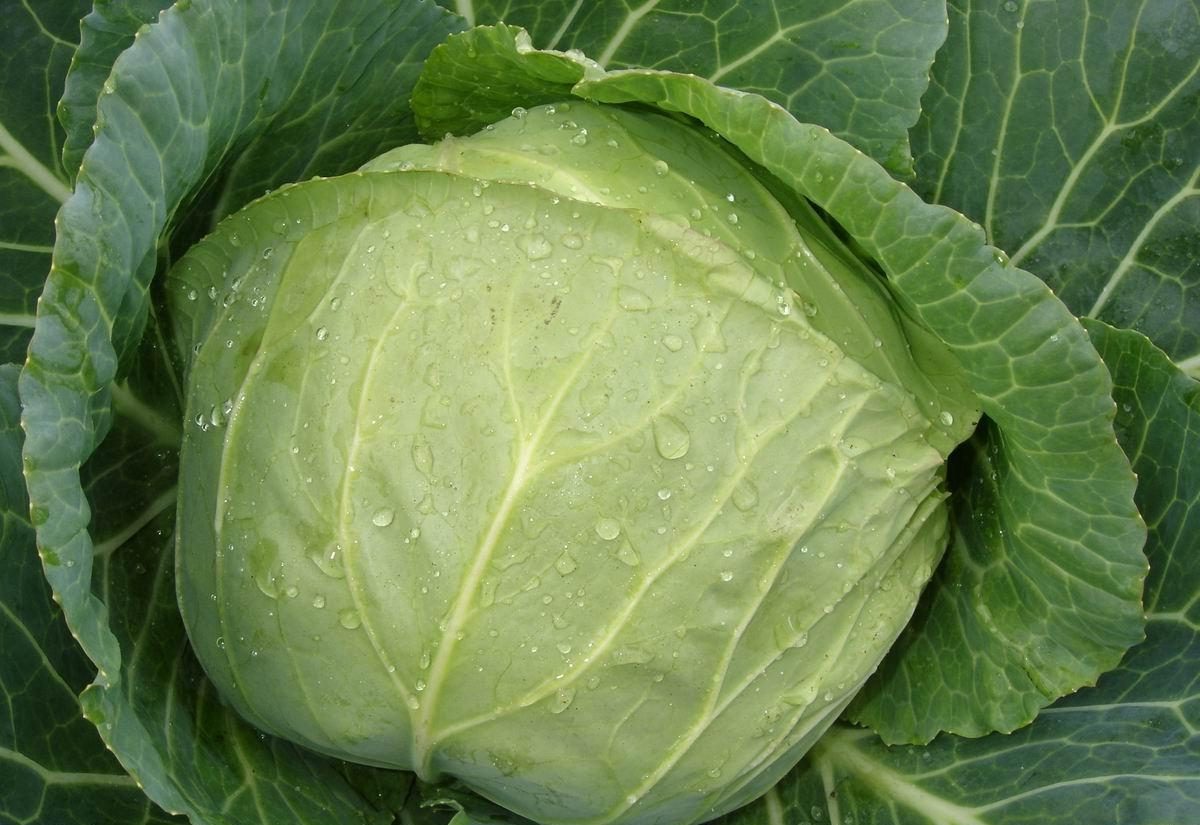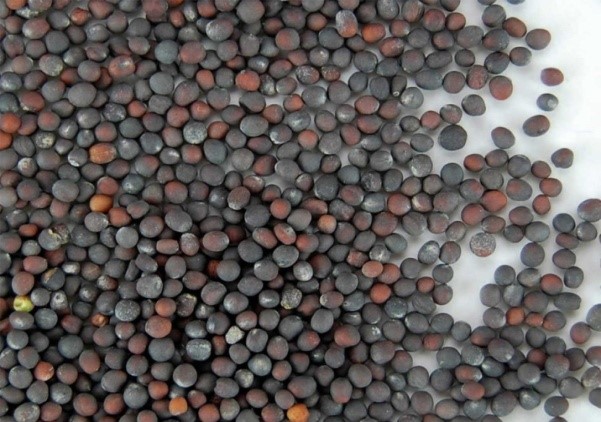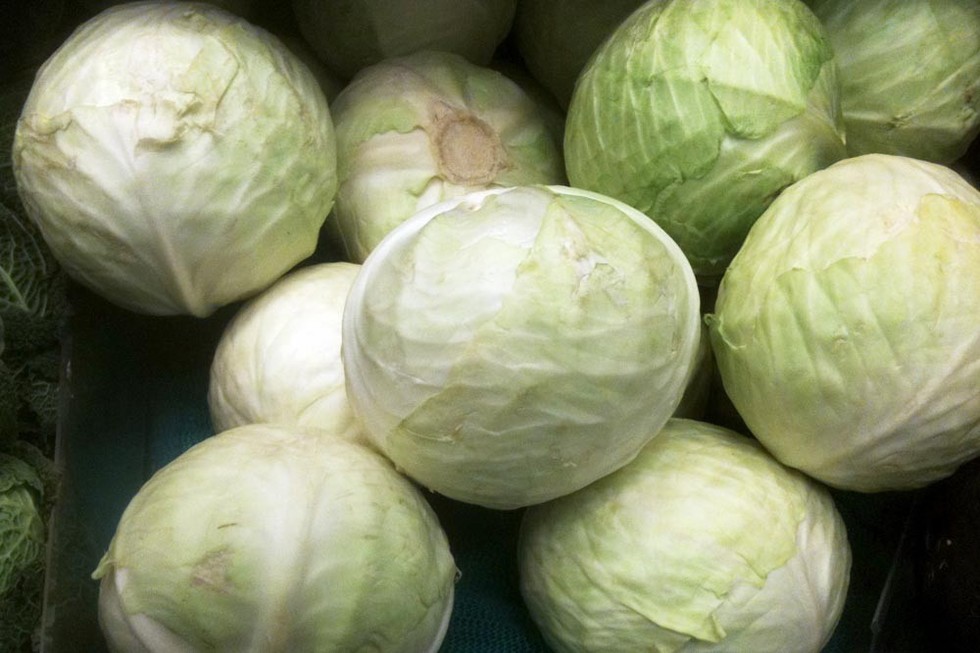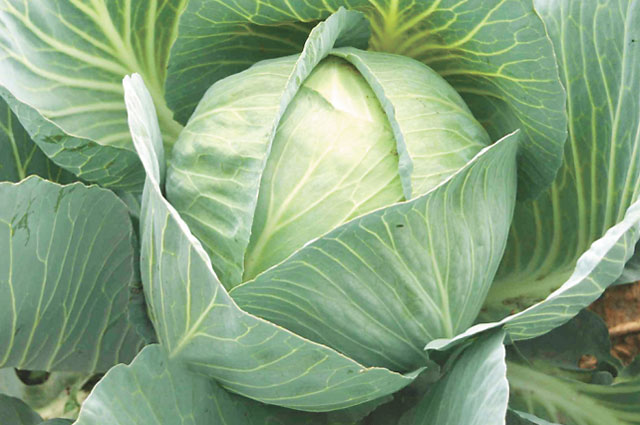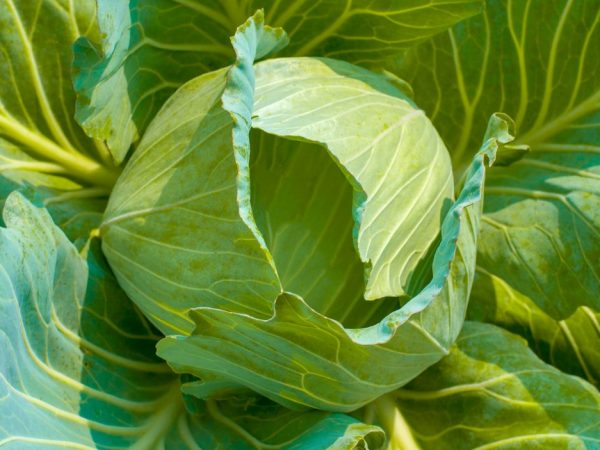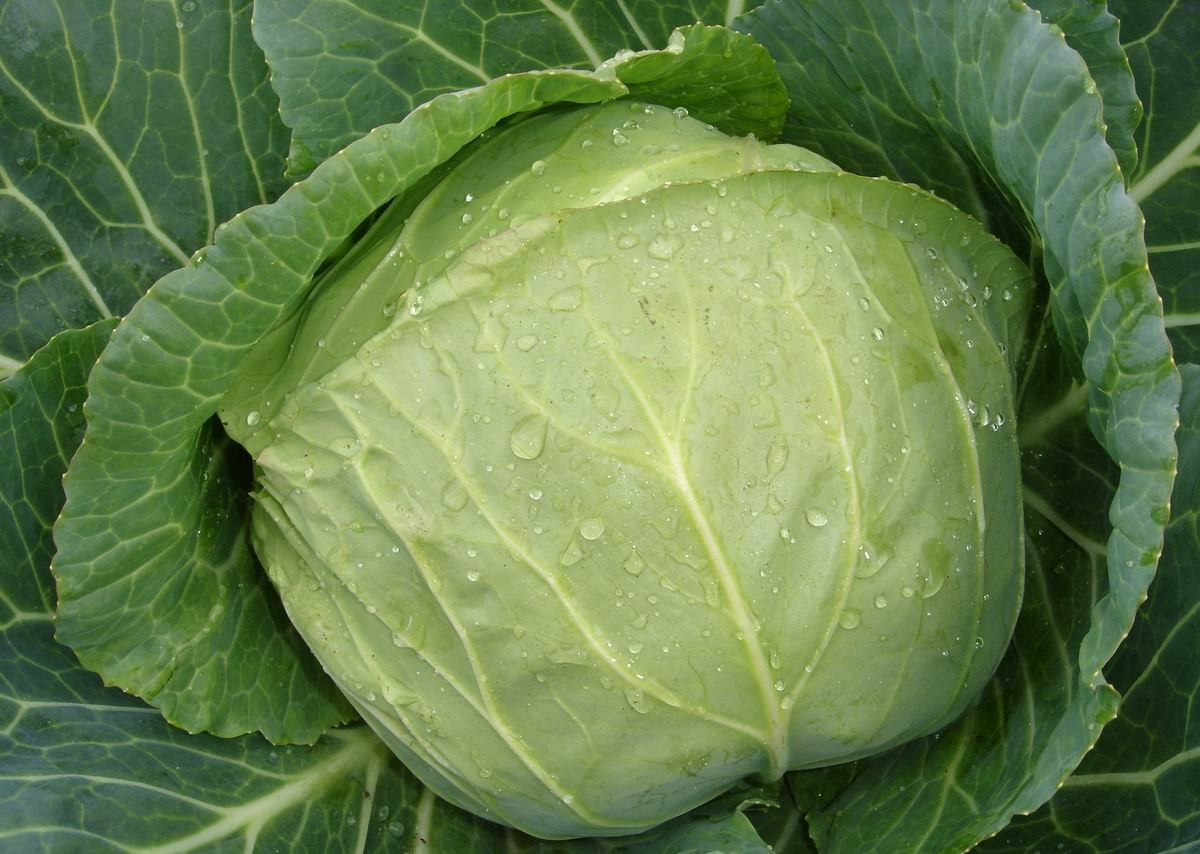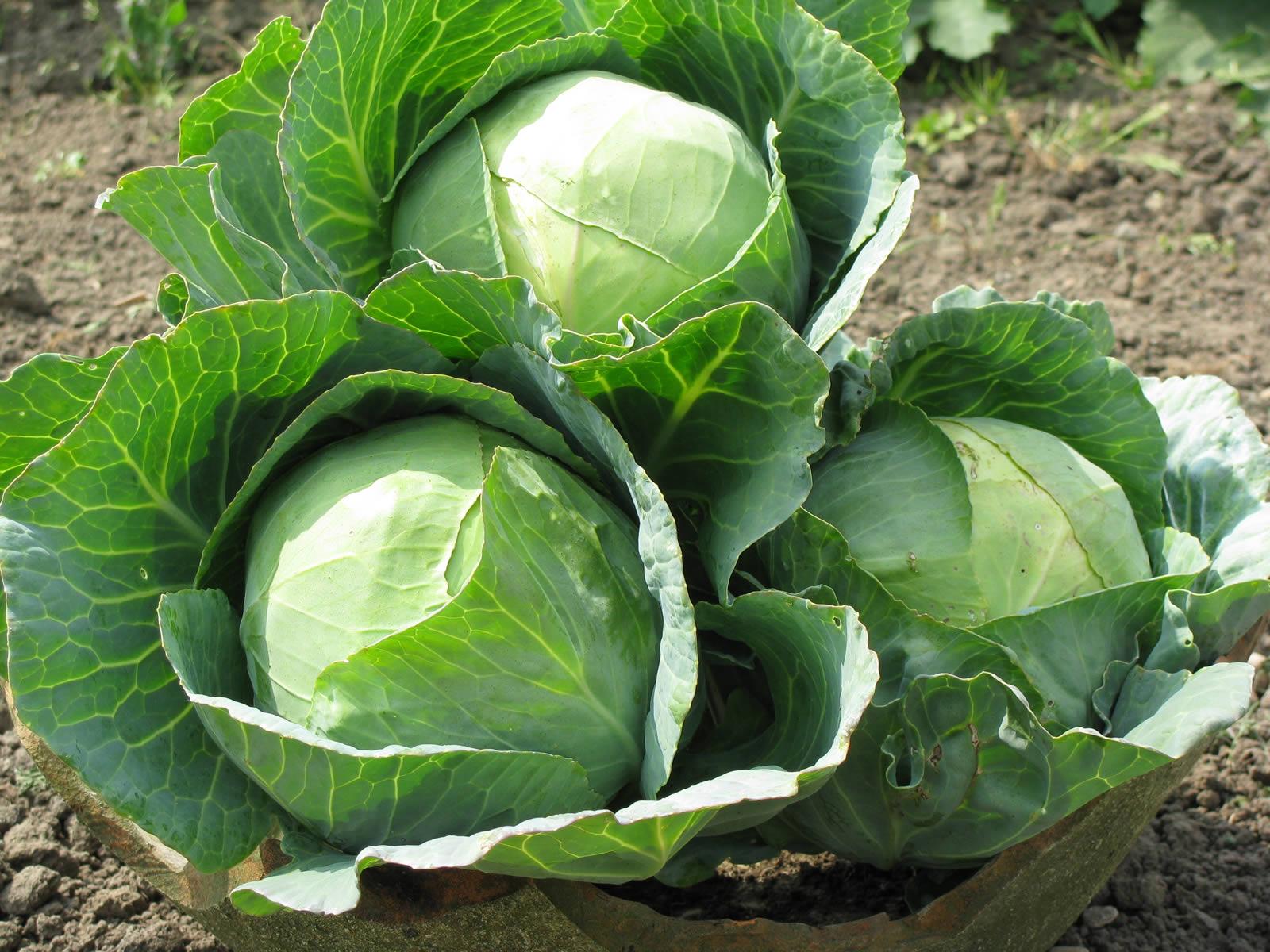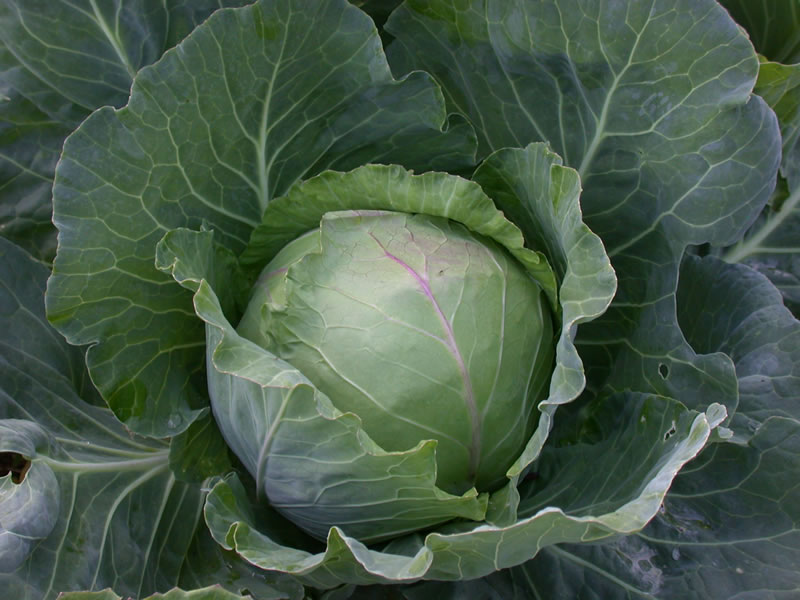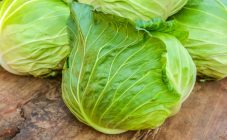Content:
Few people know the variety of the popular winter cabbage Moskovskaya. It was bred back in 1939 from the local variety of Pyshkinskaya cabbage by the breeders of the Russian research institute. But even now she successfully occupies her garden beds by right.
Description and characteristics of the variety
Cabbage Moscow late has a dense, large or very large head of cabbage with a diameter of 22 - 28 cm and more. The head of the cabbage has a round-flat shape, less often - oval. The head is of medium density or hard. The core of the fork has a white-yellowish or slightly creamy color.
Contains dry matter - 6.8-10.1%, sugars - 3.5-5.41%, vitamin C - 22-45 mg%.
On average, the weight of a head of cabbage reaches 7 kg. But if you are not lazy and do a good job, and in addition you are lucky with the weather, then in your garden you can boast of a head of cabbage in your garden - a hero of 12-18 kg.
The leaves of this variety are oval or oval-rounded, slightly wavy along the edge. Leaves are wrinkled in shape, with coarse and rare veins. Gray-green color with a slightly visible waxy coating. Cabbage rosette, large and spreading, reaching more than 1 meter in diameter.
Gardeners are very fond of late Moscow cabbage for its sweet and juicy heads of cabbage. It is good both fresh and fermented, and in preparations for the winter.
This variety has many advantages. This is both excellent taste and good marketable appearance. Also, the cultivation itself does not present any particular difficulties, which a novice gardener can successfully cope with.
Cabbage will not fail with the harvest, because it practically does not depend on climatic conditions and calmly tolerates a sharp change in temperature. Ripening occurs amicably, with a product yield with high rates of 97%.
The variety's transportability is average.
Among the shortcomings, you can indicate:
- exactingness to abundant watering;
- the likelihood of head cracking;
- exactingness to the fertility of the soil on the site;
- Because of the high, from 22 to 31 cm, stubs and at the same time a large and massive head of cabbage, cabbage often falls to the side. Therefore, frequent hilling is required, as well as the placement of supports.
- poorly tolerates drought.
Growing features
The Moscow late variety is best used for planting in the northwest and in the central regions of Russia, as well as the Far East.
From autumn it is necessary to take care of soil fertility in advance.
- Apply natural fertilizer - manure or humus, 4 - 6 kg per sq. m. Can be applied directly and under the root, when planting seedlings. You will need 0.5 kg for each bush.
- Another fertilization option is the application of urea from 28 to 36 g per sq. m., simple superphosphate from 37 to 47 gr. per sq. m and potassium chloride 21 - 32 gr. per sq. m.
- Can be used for digging nitroammofosku - 1 tsp. l. for two holes, when planting seedlings.
- Nitrofoski 60 - 90 gr. per sq. m.
- Azofosku from 20 to 25 gr. per sq. m.
- Ammofoskamide - 40 - 50 per sq. m.
The best prior and catch crops at the future cabbage planting site:
- beet;
- potatoes;
- cucumber;
- carrot;
- bow;
- pepper;
- pumpkin;
- tomato;
- herbs;
- legumes.
Cabbage and other vegetables from the cabbage family, for example, radishes, radishes, can be planted in the same place not earlier than after 3 or 4 years. And if a keel disease was also observed, then not earlier than 7 years.
Sowing seeds
Seeds for seedlings of late-ripening varieties intended for planting in the ground are sown from March 25 or 30 to the second decade of April, in extreme cases until April 25. Basically, seeds are planted in 2 - 3 pieces in separate cups with nutrient soil to a depth of 2 cm.
Nutrient soil for growing seedlings is prepared from a mixture of soil and:
- manure or compost;
- sod or garden soil;
- peat and sand in a ratio of 1–2: 2: 2: 1.
Add 5 g to a bucket of this mixture. urea, 20 - 25 gr. superphosphate, 5 gr. potassium salt and 1/2 l of ash or 30 - 50 gr. fertilizer mixture Stimulus or Growth.
A mixture for peat-manure pots is prepared from:
- humus 2 - 3 parts;
- peat 6 - 7 parts;
- turf soil - 1 part.
Add 5 g to a bucket of this mixture. urea, 20 gr. superphosphate, 5 gr. potassium salt.
If for some reason there is no peat, instead of it you can take humus and sod soil in a ratio of 16: 4 parts. Add 3 - 5 gr. To this. ammonium nitrate and 10 - 15 gr. superphosphate per bucket of mixture.
When planting a seed in a hole made, it is worth adding a little wood ash there.
You can take cups of ice cream, yoghurts and others under the seedling containers.
When the seedlings grow up, strong shoots are left, weak ones need to be removed.
You can start sowing seeds under a film at the end of April. The best temperature for seed germination is 17 to 20 degrees. After planting, seedlings appear on the 7th or 12th day.
Planting seedlings in the ground
It's important to keep the seedlings at the right temperature so they don't stretch and grow strong. In sunny weather, the thermometer should be 16, and in cloudy - at least 13 degrees. At night, a decrease to 7 is permissible. For the favorable development of seedlings from germination to the formation of the first leaf, the best temperature is from 6 to 10 degrees Celsius.
- Seedlings can be fed with: ammonium nitrate - 13 - 14 g / m²; simple superphosphate - 26 g / m² and potassium chloride - 11 g / m².
- Dissolve bird droppings or cow dung in water and fertilize three times over the summer.
The Moscow late variety is picky about fertility and soil moisture. It grows better on floodplain soils, as well as deeply dug and air-permeable, moisture-consuming, with a neutral reaction of soil solution and sod-podzolic chernozems and peatlands. If you find a site with poor sandy soil or heavy acidic soil, before planting seedlings, it must be thoroughly fertilized with manure or humus. But an excess of moisture is also harmful, because then plants can be affected by vascular bacteriosis.
It is necessary to plant seedlings in the garden when it is at least 35 days old and 5-6 leaves appear. This is usually the period from 20 to 30 May. Planting depth 8-10 cm. Planting density 2.5 - 3 plants per sq. m.
Cabbage bushes should be at a distance of 8 × 8 cm from each other and no thicker than 60 × 70 cm in order to provide it with a sufficient feeding area in the future. Can be staggered.
It is better to choose a place on the site that is not shaded, sunny.
After planting seedlings in the ground, in the phase of the outlet, feed g / sq. m .: ammonium nitrate - 6; simple superphosphate 13 and potassium chloride 5 - 6.
Pest and disease control
This variety is relatively resistant to rot and keel, but prevention should not be neglected.
- When planting seedlings, pour a handful of ash and a few peas of black pepper into the hole made.
- Against cabbage butterflies, you can spray on the soil immediately after watering a powder from a mixture of crushed snuff and black ground pepper. You can also powder them with leaves.
- For cabbage butterflies and scoops - treat with sweet water, ash solution with tar soap dissolved in it.
- Cover the cabbage with a non-woven material from the cruciferous flea. And also sprinkle the leaves with ash or tobacco dust. Plant rows of garlic next to cabbage beds. Add the fir oil to the water and sprinkle on the heads of cabbage.
- Lures will help against snails or slugs - slightly dug trays with drinks poured into them: kvass, juice or beer. You can sprinkle mustard powder between the rows.
- From cabbage aphids, sprinkle with infusions of tomato tops, mustard infusions and tobacco dust.
- With caterpillars of the beetle and butterflies, scoops, as well as cabbage flies fight with the help of ordinary garden ants. You need to try to attract them with something sweet: jam, spread sugar cubes.
- For bears, aphids, slugs - dissolve 10 ml of ammonia in a bucket of water. Before planting seedlings, pour 200 - 300 ml into each hole. the resulting solution. With this solution, you can process the leaves, but you should add a little grated laundry soap there.
Harvesting
From germination to the start of collection, 115 - 141 days pass, and before the start of mass harvesting 143 - 160 days. High-yielding variety from 5.5 to 10.4 kg / m3. sq. Sometimes it reaches 12 kg per sq. m.
Harvesting is best done after the onset of frost, which improves winter storage.
Stability of heads of cabbage - up to six months, tolerates wintering well.
Although Moscow late white cabbage has more than a dozen years behind it, but also in the middle of varietal diversity, it still makes good competition to this day, deservedly enjoys fame and popularity among gardeners.
